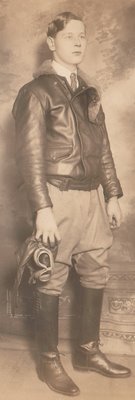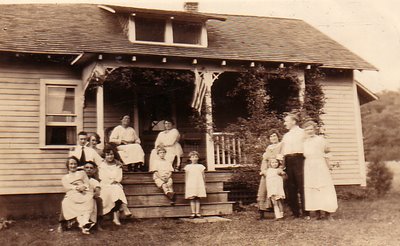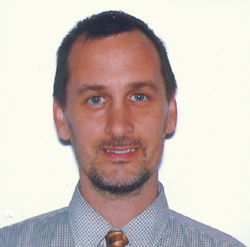 Eddie August Schneider (1911-1940) Record Holding Aviator; Fought for the Loyalists in the Spanish Civil War; Died in a Plane Crash (b. October 20, 1911, 2nd Avenue and 17th Street, Manhattan, New York County, New York City, New York, USA - d. December 23, 1940, Deep Creek and Flatbush Avenue, Floyd Bennett Field, Brooklyn, Kings County, Long Island, New York City, New York, USA)
Eddie August Schneider (1911-1940) Record Holding Aviator; Fought for the Loyalists in the Spanish Civil War; Died in a Plane Crash (b. October 20, 1911, 2nd Avenue and 17th Street, Manhattan, New York County, New York City, New York, USA - d. December 23, 1940, Deep Creek and Flatbush Avenue, Floyd Bennett Field, Brooklyn, Kings County, Long Island, New York City, New York, USA)
2 die as planes crash at field. Eddie Schneider, who flew at 15, is killed when his craft and Navy trainer collide. Passenger also victim. US ship is landed safely at Floyd Bennett Airport despite damaged wings.Eddie Schneider, who started flying when he was 15 years old and set a junior transcontinental record in 1930 at the age of 18, was killed with a student passenger yesterday when their light training plane was in collision with a Naval Reserve plane, also on a training flight, just west of Floyd Bennett Field. The Naval Reserve plane landed safely at the field but Schneider's plane went into a spin, tore off a wing, and crashed into Deep Creek, a few hundred feet across Flatbush Avenue from the city airport in Brooklyn. Both Schneider and his passenger, George W. Herzog, 37, a contractor living at 535 North Second Street, New Hyde Park, Long Island, were dead when their bodies were pulled from the submerged wreckage. At the Naval Reserve base at Floyd Bennett Field it was said the Navy biplane, a Stearman trainer, had been piloted by Ensign Kenneth A, Kuehner, 25, of Minister, Ohio, with Second Class Seaman Frank Newcomer, of Rochester, Ohio, as a passenger. The right lower wing of the naval plane, the left upper wing and the propeller were damaged. The third accident, in two weeks in which a Naval Reserve plane based at Floyd Bennett Field was involved, it brought the comment from Dock Commissioner John McKenzie that it was the sort of thing to be expected “where there are training: flights at an airport.” “That is the point that Mayor La Guardia has been making". Mr. McKenzie said, "in his efforts to keep training away from commercial fields" Police said the witnesses to the accident were agreed that the Naval Reserve plane was crossing above the plane piloted by Schneider, a high-wing Piper Tandem Cub monoplane, as the two approached the field for a landing 600 feet above Deep Creek, Schneider's plane went into a tight spin as the two planes disengaged after colliding, the witnesses said, appeared to straighten out and then plummeted into the water as its left wing tore loose. Many would-be rescuers were on the scene within, a few moments, including police, Coast Guardsmen and fliers from Floyd Bennett Field. The bodies of the two men were pulled quickly from the wreckage and onto a half-submerged barge near which the plane fell, but it appeared both had been killed when the plane hit the water. Joseph Hanley, first assistant district attorney of Kings County, opened an investigation at the scene and a naval board of inquiry, headed by Commander H. R. Bowes, was ordered convened by the Navy Department in Washington. Schneider lived at 32-50 Seventy-third Street, Jackson Heights, Queens. He leaves a widow. Herzog leaves a widow and two children. He had been flying some time, holding a limited commercial pilot's license, but had enrolled for a refresher course with the Archie Baxter Flying Service, Inc., owner of the plane. Schneider was an instructor at the school. The bodies of the two men were taken to Floyd Bennett Field pending funeral arrangements. Schneider first gained public attention as a flier in the Summer of 1930 when he announced plans for an attempt to break the junior transcontinental east-west record of 34 hours 57 minutes set the year before by 15-year-old Frank Goldsborough, who was later killed. Taking off from Westfield, New Jersey, August 14, he landed at Los Angeles four days later with a new elapsed time mark of 29 hours 55 minutes. He then flew the west-east passage in 27 hours 19 minutes to better Goldsborough's time for that flight and also for the round trip. He continued active in aviation, competing in National Air Tours, races, and as an instructor. He went to Spain in 1936 to fly for the Loyalists, but returned the next year without having collected the $1,500-a-month pay that was promised him. He and other American fliers were looked on with suspicion by many of the Loyalists, he said, because they were not Communists. Schneider had a narrow escape from death May 15, 1935, when the engine of his training plane failed and it fell into Newark Bay with him and a student passenger shortly after they had taken off from Jersey City Airport, of which he then was manager. Schneider's father, Emil, a Jersey City banker, financed his son's transcontinental flight after having first opposed his efforts to become a flier. The boy had quit school at 15 and worked as a mechanic at Roosevelt Field, Mineola, Long Island, and at the Westfield airport to secure money for flying lessons. He was the youngest licensed flier in the country when he received a limited commercial license shortly after his eighteenth birthday in 1929.
Source: New York Times, New York, December 24, 1940
Local pilot killed. Eddie Schneider and passenger die in crash. Eddie A. Schneider, 29, veteran pilot and former holder of the junior transcontinental speed record for airplanes, was instantly killed yesterday afternoon when a small monoplane in which he was giving a refresher course to another pilot was struck by U.S. Naval Reserve plane at Floyd Bennett Airport, Brooklyn. Schneider’s plane, one wing sheared off, plummeted in a tight spin into an inlet of Jamaica Bay, causing instant death to Schneider and his student, George W. Herzog, 37. Schneider, a native of New York City was a resident of Jersey City until a few years ago. He became interested in aviation while still a student at Dickenson High School, Jersey City, causing him to leave school when 15 to go to work as a plane mechanic at old Roosevelt Field Hempstead, Long Island. Schneider during his career in aviation broke the East-West, West-East and round trip junior transcontinental records in 1930 in his famous red Cessna monoplane, when only 18. He crossed the continent from Westfield Airport, New Jersey, to Los Angeles in 29 hours and 41 minutes, breaking the record of the late Frank Goldsborough. Eddie was at one time the youngest licensed commercial pilot and competed in air races and meets with men far more experienced and older than he was, after carrying off first honors. In the Ford National Reliability Tours of 1930 and 1931. Schneider with his red Cessna, carried off the Great Lakes Trophy one year, and then took first place the next year. In one of the air tours a defect in a propeller caused the engine of his plane to break loose while flying over a mountainous section of Kentucky, and Schneider made a forced landing in a corn patch on a side of the mountain. A new engine was rushed to him and after an extremely difficult takeoff, which experienced airmen, said was not possible, he went on to win first place in the tour. Schneider in 1934 became the manager of the old Jersey City Airport at Droyers Point, operating the filed for a period of a little more than a year. While at the airport he taught many Hudson County students how to fly. Schneider had a narrow escape in 1935 when a Travelair biplane in which he and a student were taking off from the airport landed in Newark Bay after the motor suddenly went dead at 100 feet of attitude. The plane was only slightly damaged in the forced water landing. Schneider and the student Al Clemmings, wading to shore. In 1936 Eddie with Bert Acosta and three other pilots, enlisted in the Yankee Escadrille of the Loyalist Air Corps in Spain. For several months Schneider was flying antiquated planes, which had been rigged up with racks, dropping bombs on military objectives of the Franco forces. Schneider finally became thoroughly disgusted with the Communist regime, which he said was directing the Loyalist forces, and after many difficulties, returned to this country. Since returning from Spain, Schneider, a licensed airplane mechanic since he was 15, worked for American Airlines, first at Newark Airport and then at La Guardia Airport, New York City, first as a mechanic, then as instrument inspector. About six months ago he resigned his post with American Airlines to take a position as student instructor with the Archie Baxter Flying Service teaching Civil Aeronautics Authority students to fly. Yesterday afternoon Schneider took Herzog, a resident of New Hyde Park, Long Island, up for a refresher course. Herzog, holder of a commercial license, had allowed the license to lapse, and was required to take dual flying time before his license would be renewed. Schneider was flying at about 600 feet altitude, coming in for a landing, when a United States Naval Reserve biplane piloted by Ensign Kenneth A. Kuehler, 25, of Rochester, Ohio, was observer, struck the tail assembly of Schneider’s tandem Piper Cub. The tails surfaces and left wing of Schneider’s plane were badly damaged and as the two planes separated after the mid-air collision, the small monoplane went in a tight spin, striking Deep Creek several hundred feet from Flatbush Avenue and sinking. The Naval Reserve plane was able to land at the airport. Airport emergency crews raced to the spot where Schneider’s plane had submerged and the bodies of Schneider and Herzog were taken from the plane within a very few minutes after the crash. Attempts were made to revive the two, but a Kings County Hospital ambulance intern pronounced both dead on arrival at the scene. It is believed that both were killed by the impact of the plane with the water. The bodies were taken to Kings County Hospital and Schneider will be released today and brought to Jersey City for funeral services. Herzog is survived by a widow and two small children. Schneider lived in Jersey City at 114 Carlton Avenue in the Hudson City section when he established the transcontinental records.
Source: Jersey Journal, Jersey City, New Jersey, December 24, 1940
 Eddie August Schneider (1911-1940) in the Richfield Reaper of Richfield, Utah on March 21, 1935.
Eddie August Schneider (1911-1940) in the Richfield Reaper of Richfield, Utah on March 21, 1935.





